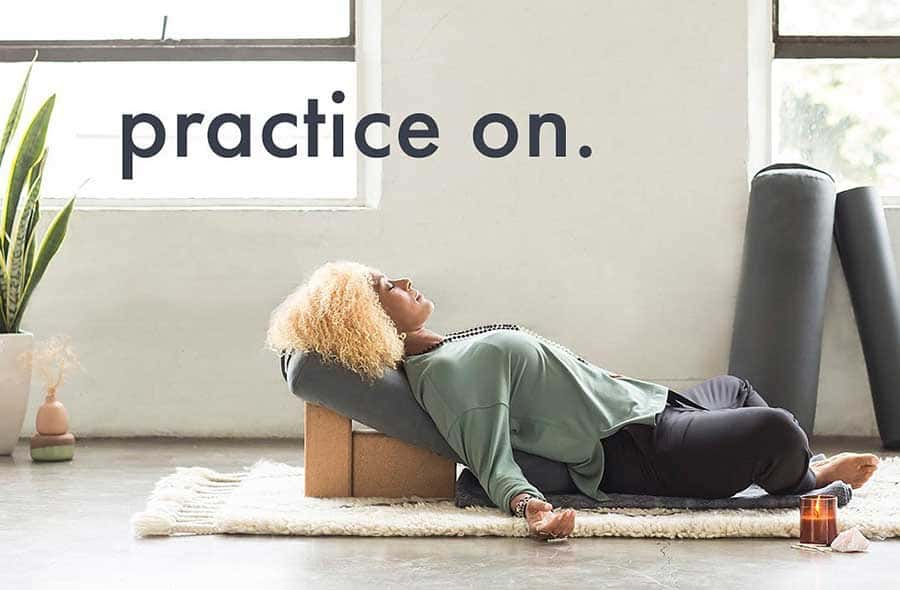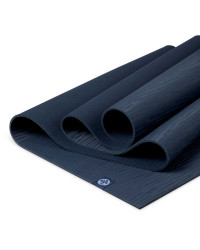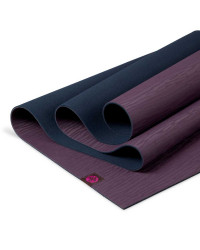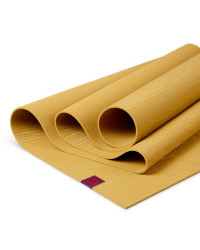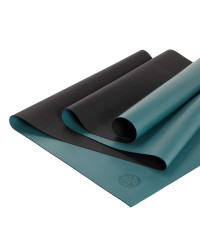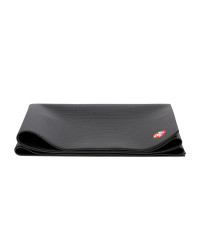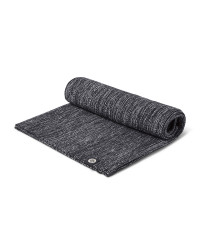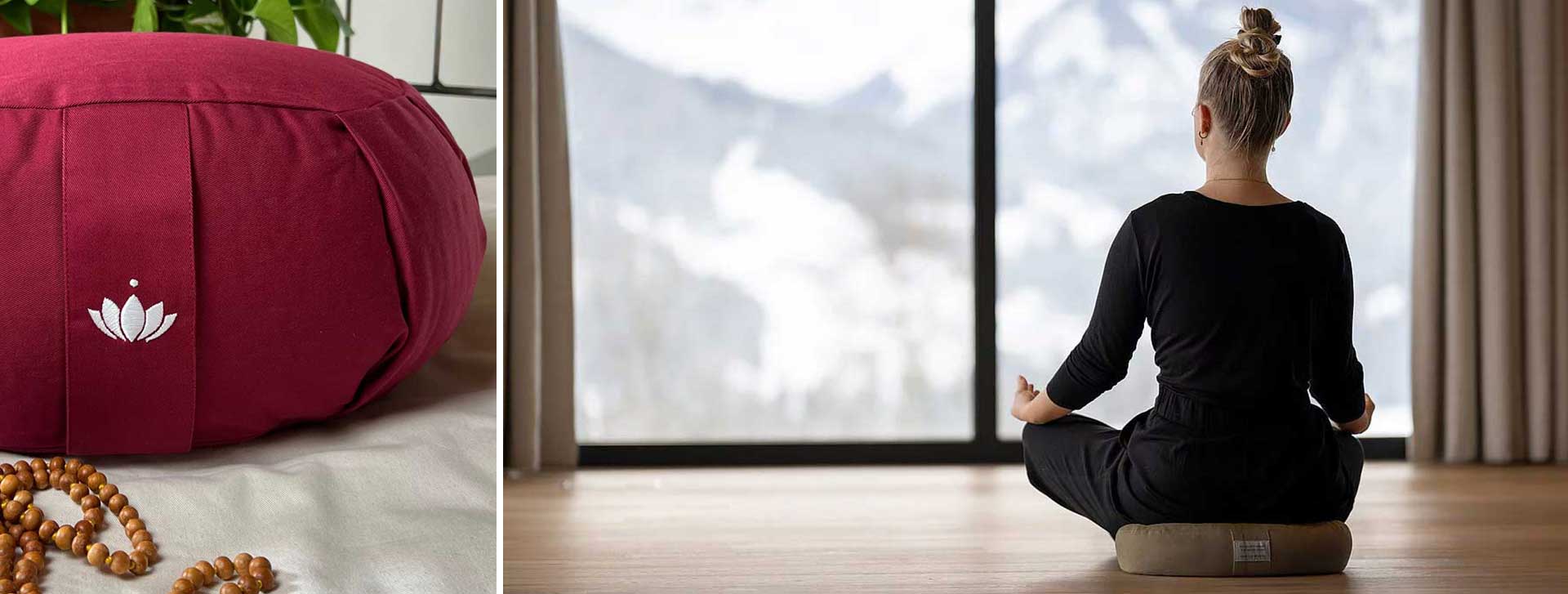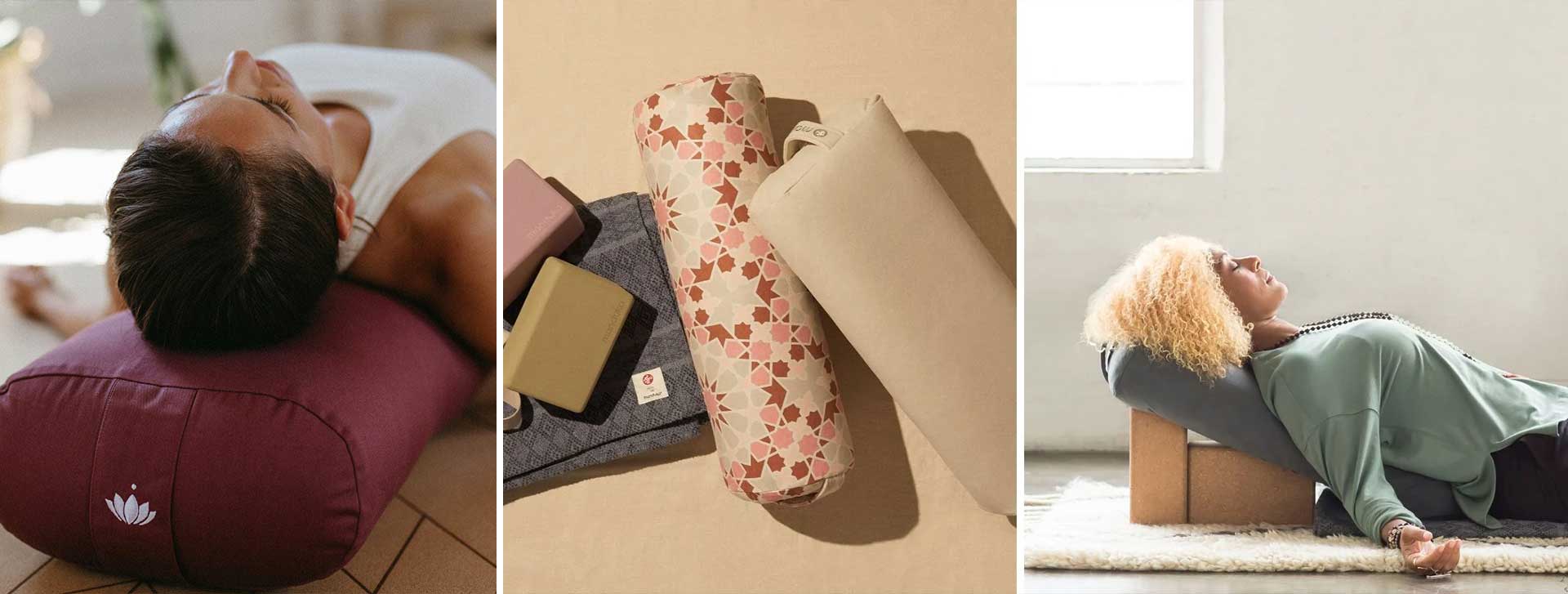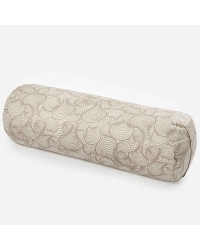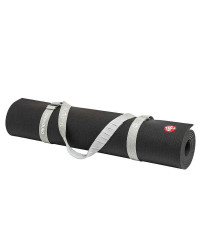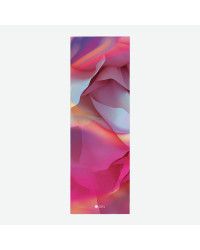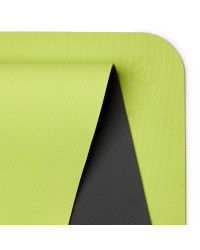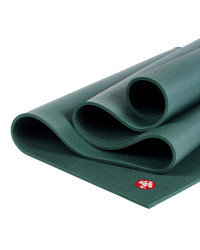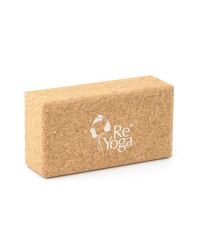We use cookies to make your experience better. To comply with the new e-Privacy directive, we need to ask for your consent to set the cookies. Learn more.
How to choose the right yoga bolster?
How to choose the right bolster for yoga?
Why so many variants?
This is exactly the question that customers often ask in our store. Round bolster or rectangular bolster, small or large, stuffed with what...?
Types of bolsters for yoga and meditation
Bolster for yoga is important accessory for many yogic postures and meditation. When choosing a bolster, it is necessary to take into account the size, shape, filling and cover material.
Bolster size
Bolsters are available in various sizes, from small to large. Small bolsters are suitable for people of small figure or for use in certain positions. Large bolsters are suitable for people with a larger figure or for use in several positions.
Shape of bolsters
Bolsters are available in three main shapes: round, rectangular and moon-shaped. Round bolsters are more versatile and can be used in different positions. Rectangular bolsters are more specific.
Bolsters filling
Bolsters are filled with a variety of materials including foam, kapok wool, millet, rice or oats. Foam is the most durable material, but it can also be the most expensive. Kapok wool is a natural material that is very comfortable and can adapt to the body. Millet, rice and oats are natural materials that are very friendly to environment.
Bolsters cover material
Bolsters are available in a variety of cover materials, including cotton, polyester.
We have prepared a guide to make it easier to choose a yoga bolster to answer questions with which we face daily.
Why do we use a bolster for yoga?
Bolster in yoga is used as a support in various asanas. Like other yoga accessories (blocks, blanket, straps, wheel...), the bolster helps us to relieve the parts of the body in an asana or when we go into a certain asana.
Bolsters are most commonly used in restorative yoga. They help to support the body, provide comfort, and with their help we achieve better blood circulation.
How to choose a yoga bolster - index
- Why do we use a bolster for yoga?
- Rectangular bolster, larger
- Rectangular bolster, smaller
- Round bolster
- What is a yoga bolster filled with? Natural or artificial filler
- Asanas (positions) to use bolster
- Child's position (Balasana)
- Reclined Butterfly Pose (Supta Baddha Konasana)
- Seated Forward Bend Pose (Paschimottanasana)
- Corpse Pose (Savasana)
- Important information - before you start with the practice
Some popular brands of bolsters for yoga and meditation
What is the right yoga bolster?
Rectangular bolster, larger
- it gives us a wider surface and thus offers support to the entire spine
- is more stable, safer, because it does not move or moves less
- great for Supta Virasana asana
- along with the blocks is great for deeper relaxation asanas
- great for beginners as it offers compact support along the entire length
- you can sit on it in sitting asanas when you are leaning forward
- it also provides firm support in meditation poses
We recommend bolsters:
- Lotuscrafts Restorative L rectangular bolster
- Yoga Design Lab Yoga bolster
- Manduka Rectangular bolster
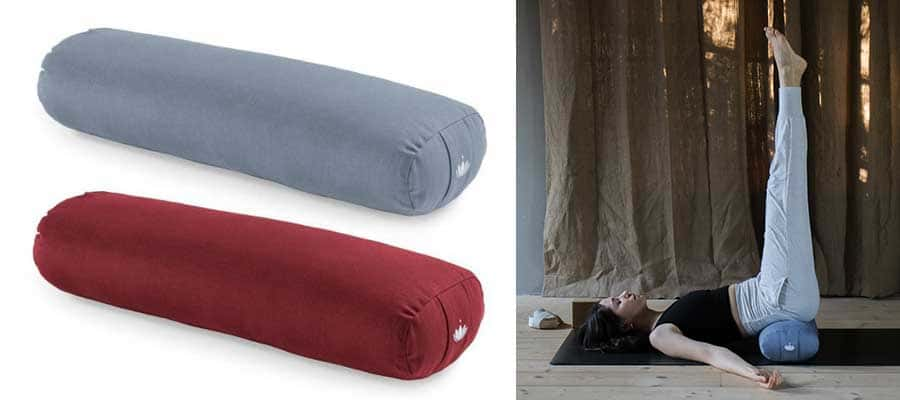
Rectangular bolster, smaller
- great for targeted stretching and smaller supports (e.g. ankle support)
- great for support in side asanas
- also great for opening the chest on the back
- great for opening the hips (pigeon asana)
Recommended
- Lotuscrafts Restorative L rectangular bolster
- Yoga Design Lab Yoga bolster
- Manduka Rectangular bolster

Round bolster
- best support when trying to create a “curve” when encouraging a natural arch of the body, which helps deepen the stretch in back and side bends
- great for opening the chest (when placed directly under the spine, it allows the shoulders to move away from both sides)
- It is also an excellent tool for Savasana
We recommend:

What is yoga bolster filled with? Natural or artificial filler
Filling - natural or artificial / husks, cotton, kapok...
Organic cotton
Organic cotton is in harder bolsters. It offers great support, the bolster holds shape. Cotton is a "heavy" filling and therefore the bolster is heavier. Yoga design Lab larger rectangular bolster is great for anyone looking for really firm support.
Spelt husks
Spelt husks make the bolster softer. The shells are light and the bolster is easier for carrying. Husks are also "waste" and therefore bolsters with husks are cheaper. In a bolster stuffed with spelt husks we "sink in" a little bit and it's extremely comfortable. Usually filled with husks are round bolsters.
Kapok wool
Kapok is a tree and a fiber. We know it as silk cotton or java cotton. The kapok tree is a mighty tree, grows up to 60 m high and has a wide canopy, large branches and also large thorns.
Its fruits are about 15 cm long "pods". Kapok fibers are a renewable raw material - most kapok trees are wild, so they are not grown in orchards and are not monoculture. Thus, no fertilizers or sprays are used. No further chemical treatment is required for further processing.
Kapok is a naturally biodegradable fiber. The waxy coating of the kapok fibers repels water. Even after washing, it returns to its original shape and does not stick to lumps. It is resistant to mold. The natural bitter substances in kapok have an antibacterial and antimicrobial effect, which moths and mites do not like. Kapok is also recommended for people with allergies to animal hair. It is often used to fill soft, plush toys.
The bolster filled with kapok offers excellent support. It holds shape. It is light and easy to carry. An excellent rectangular bolster filled with kapok can be found at Lotuscrafts and this big and small bolster.
Synthetic filler (at Manduka)
The filler contains 30% recycled fibers. It is soft at the same time, but offers good support. It is resistant to moisture, mites, mold. It is easy to carry.

Some asanas (positions) to use the yoga bolster
Evening yoga routine
Sleep is a natural tonic for a healthy life. The deeper you sleep, the healthier you are. - Swami Sivananda
Good and peaceful sleep is important for our physical, mental and emotional health. When we sleep, the body regenerates, and the brain rests and "cleanses" the polluted "part of the thoughts that have accumulated during the day. If we sleep too little or restlessly, we often have problems with concentration, forgetfulness, the body's resistance to stress is lower...
We absorb an incredible number of different stimuli in our daily lives. This means that our brain and body are extremely busy every day, busy balancing our stress hormones when we find ourselves in stressful situations.
Unfortunately, the outside world expects us to act like tireless machines all the time. We try to act "best", kindly and helpfully in all areas of our lives. It is therefore not surprising that insomnia has become a widespread disease, people find it difficult to rest in the evening and a feeling of restlessness spreads within us.
So it is even more important that we create a routine for the evening hours that makes sure we find our center again and delve deeper into ourselves.
Here are some tools you can do before bed for better sleep.
First, some suggestions, tips for a peaceful sleep
- prepare your space for an evening of relaxation
- avoid artificial light sources (prepare candles or bulbs with warm, dim tones of light)
- avoid "blue" light - turn off the phone, computer
- ventilate well the place where you sleep, release fresh oxygen and fresh energy into the room
- use natural materials for bedding, curtains, wooden furniture
- turn off wifi in the room at night and reduce electromagnetic pollution
- essential oils of lavender, pine, cedar, eucalyptus... or the sacred wood stick Palo Santo, create an atmosphere of serenity and stimulate the parasympathetic nervous system
- a great accessory is also a soothing eye pad - it can be filled with lavender or a combination of lavender - flaxseed (such a pad can also be "heated" on the fireplace, radiator, which is especially nice)
- bedtime meditation and / or relaxing yoga will give your body and mind a healing relaxation
Sit in the desired position with your legs crossed, gently straighten your spine and let your hands rest relaxed on your thighs. Here you can already practice abdominal breathing and leave all the impressions of the day behind.
Child's Pose (Balasana)
It expresses protection and security. The pose is simple and very effective. And you can easily achieve calmness and relaxation. Put off your tension and feel how your back is gently stretched and you can really come to your senses. The baby pose is great for stretching the back, relaxing the muscles in the neck and shoulders. Gently stretches hips, thighs and ankles.
Perform the pose by kneeling, slightly expanding the thighs and then sitting on your heels. The buttocks should touch your heels. Keep your spine straight. When exhaling, lower your head forward, arms are outstretched forward, or place them beside your body. The chest can rest on the thighs or in between. Take a deep breath in the abdomen and relax the jaw joints.
(Variation: stretch your arms forward, consciously lengthening your back.) The pose is even more relaxing if you place a bolster (round or larger rectangular) in front of you (between your thighs). And of course you can also find your own version.
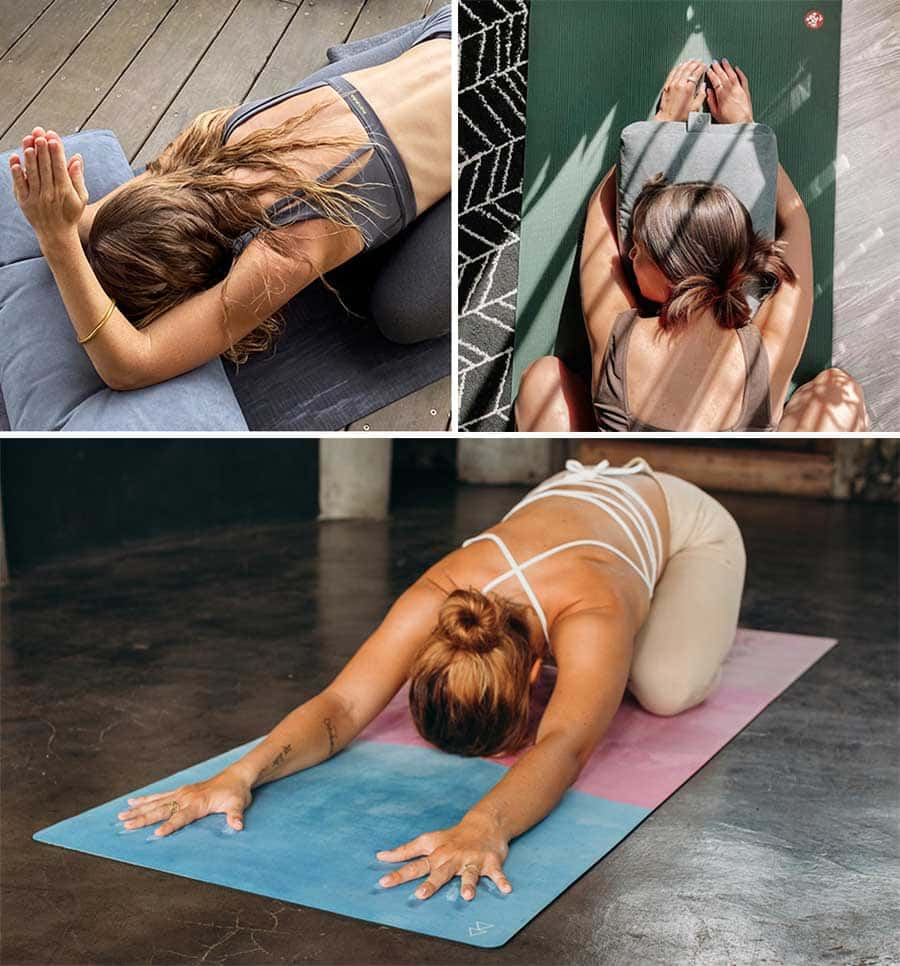
Reclined Butterfly Pose (Supta Baddha Konasana)
It is one of the best pose to relax the body and mind. In particular, it helps to relax the abdomen and pelvis. Great pose to relieve premenstrual problems. It is great for relieving stress, it increases concentration, helps with headaches, reduces abdominal tension.
To perform the pose, place a large rectangular bolster on the mat. Sit on its extreme edge so that your buttocks slide towards the mat. It is advisable to place a blanket on the other side of the boster to rest your head on it. Bring your soles closer to each other in front of you and let your knees "fall" outwards, each knee to its side.
You can also place a block under your knees. Slowly lower yourself back. The spine should be in the middle of the bolster, the pelvic part and the relaxed buttocks on the mat. Keep your arms out (you can also lower them over your head to achieve an even more intense pose). You can also help yourself with the pose with a yoga band and additional blocks under the bolster. It is important to reach a pose where you are comfortable and can relax.
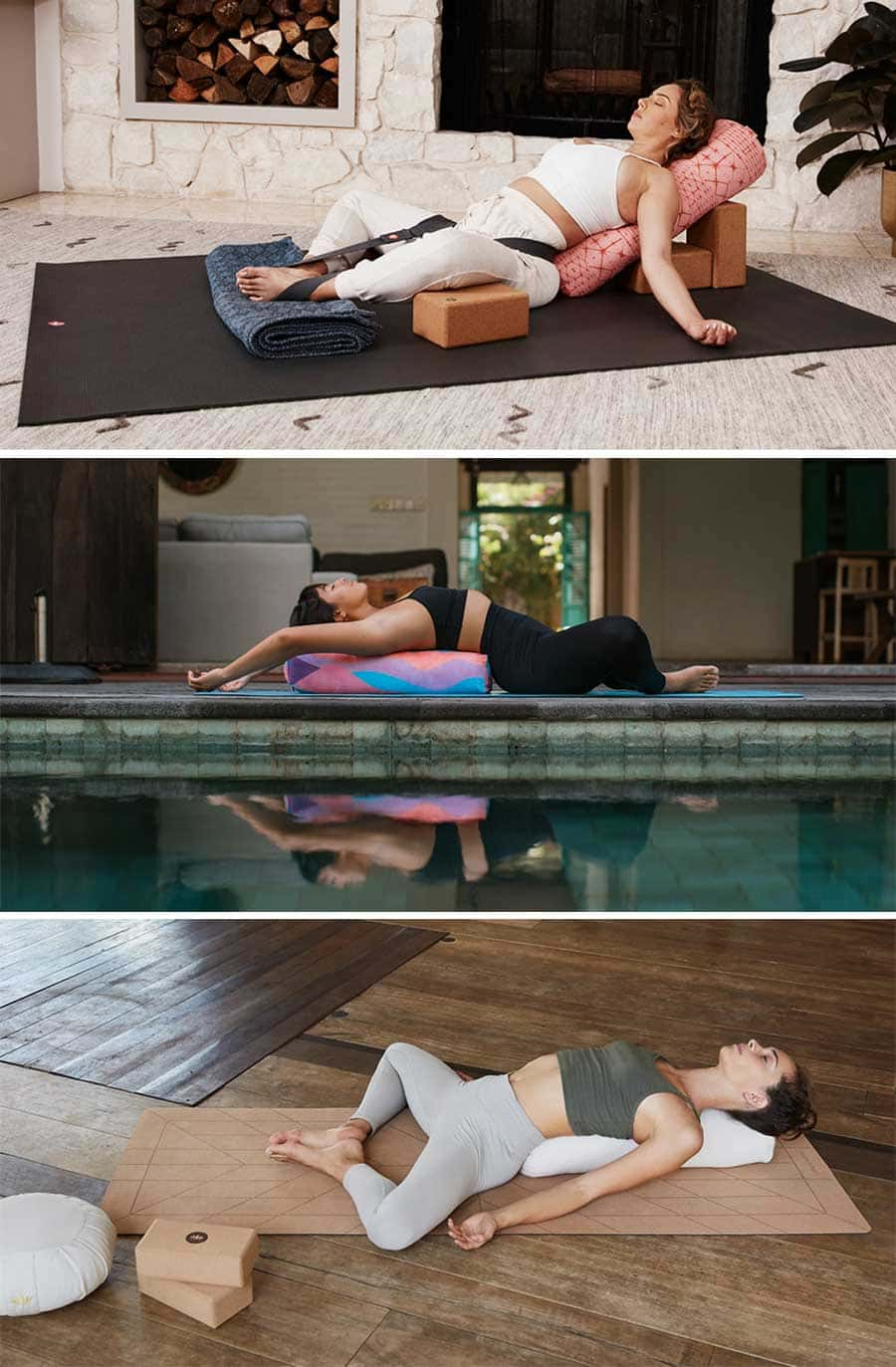
Seated Forward Bend Pose (Paschimottanasana)
It stretches the entire back of the body and has a positive effect on the digestive organs. So, it stretches our spine, shoulder area, thigh muscles. We stimulate the liver, kidneys and also the ovaries and uterus. This is the right pose for our, from sitting, cramped hips, back and legs. It helps us find relaxation and calms us down.
We start by performing the pose by sitting on a yoga mat, stretching our legs in front of us. Push the heels against the floor, the toes up. Push the palms along the hips on the mat, the spine is straight up. Exhale. With an extended spine, lean forward towards the legs, feet. Extend your arms along the outside of your legs. The spine is straight. This is where we can ease the situation by using bolsters, blocks, straps, blankets.
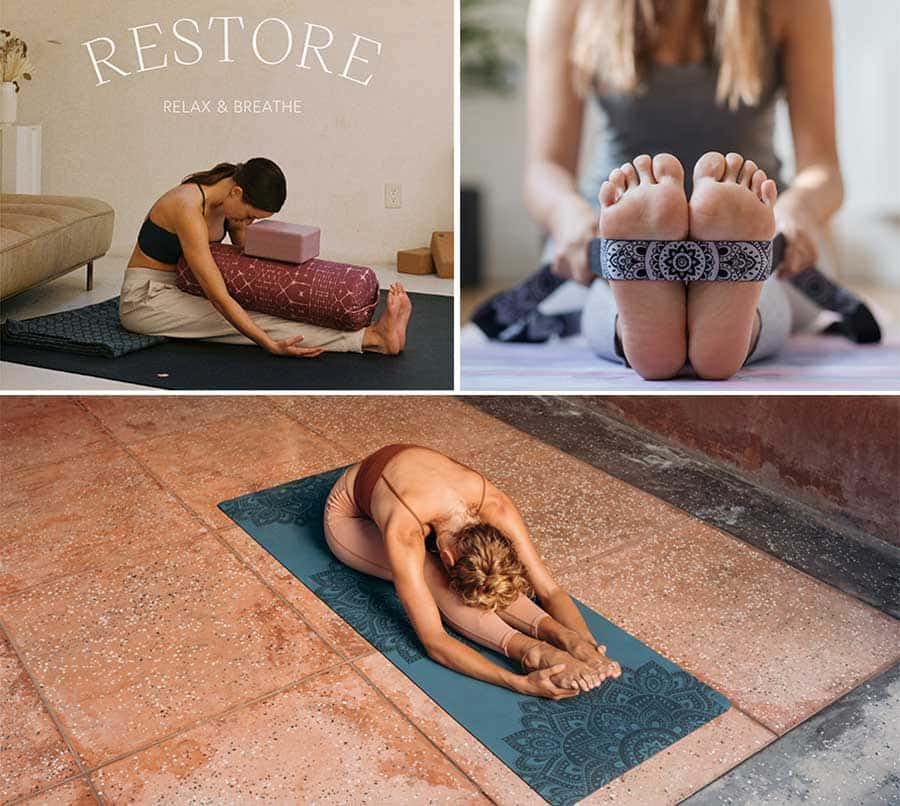
Corpse Pose (Savasana)
It is the most common pose or the most classic relaxation after the practice of yoga. It is also known as the "easiest" pose. But there can be significantly more and there are many variants of Savasana. This is by no means yogic sleep, but rather high concentration, body awareness.
Savasana improves concentration and helps a lot with insomnia. It calms the mind, relieves stress and fatigue.
The most classic pose is to lie on your back, spread your arms and legs about 20 cm from your body, turn your palms up. Feet, knees and thighs should fall outwards. We close our eyes and try to relax our thoughts.
You are exploring right at Savasana! Ask yoga teachers who practice relaxation yoga. You will be amazed at what this pose has to offer. And this is where the use of blocks, blankets, bolsters is extremely welcome.
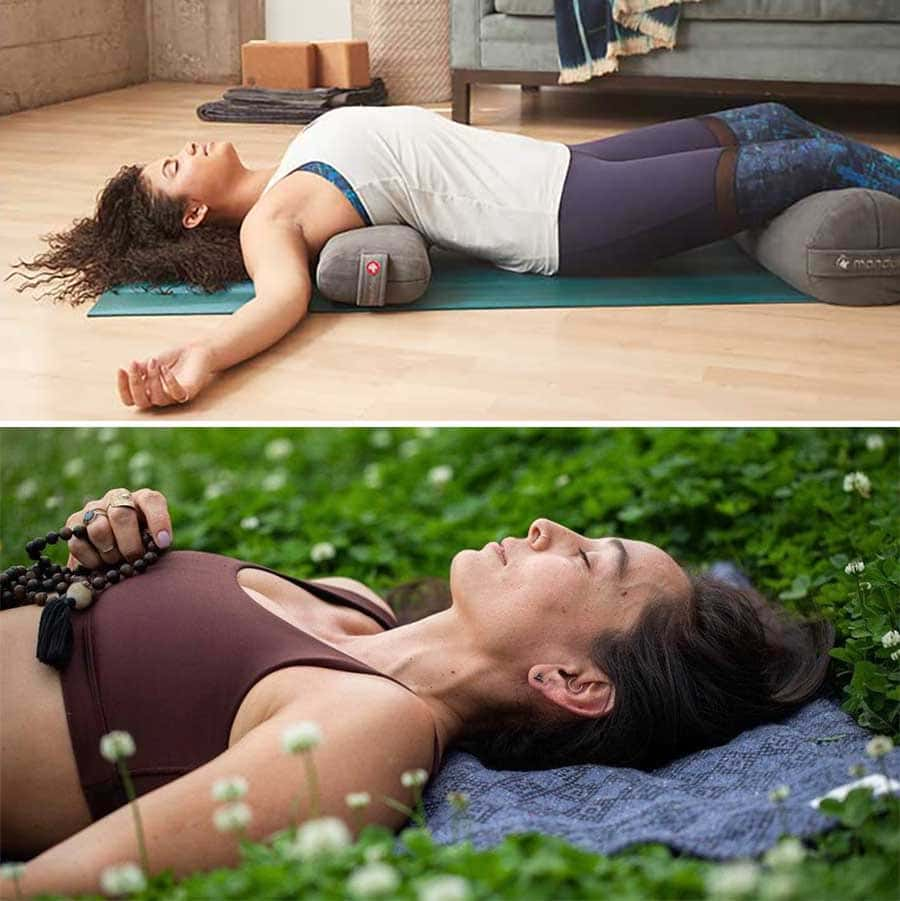
Important - before you start
Before you start practicing, it is recommended that you will be assisted by an expert (yoga teacher). All of the above are our tips and hints on how you can relax. We cannot be held responsible for any damage that may occur during your practice.
Descriptions for the implementation of poses are "our" descriptions and it is difficult to describe the course of the poses in words alone. Be sure to ask your yoga teacher who knows you and can advise you on exactly what and how is right for you. (For example, the pose of a lying butterfly is not suitable for people with knees, lower back injuries etc...).
